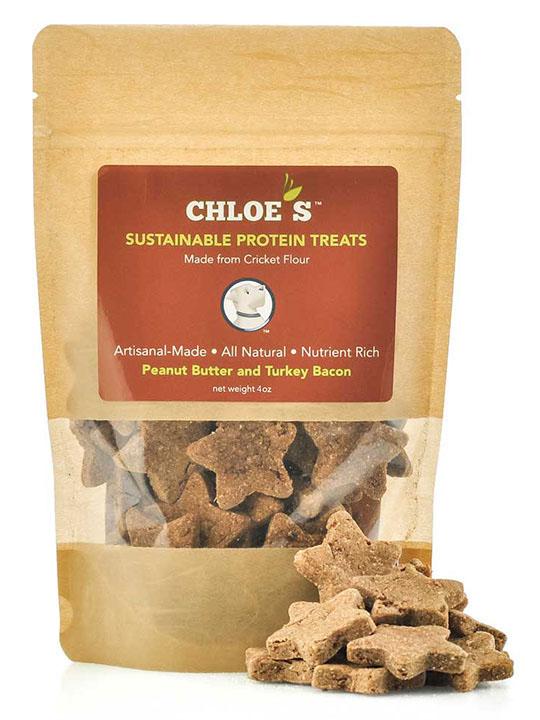When I first heard about the idea of making pet treats out of crickets, it caught my attention. I had visions of the smelly little creepy crawlers that my parents fished with when I was a girl. But then I remembered the attentiveness my childhood pets always showed to leftover crickets. They seemed to want those bugs, though I never considered actually offering them back then. But now that I am a pet expert, I am always thinking about natural sources of high quality nutrition and novel ways to introduce tasty and healthy snacks to offer my dogs and my patients.
It piqued my interest enough to contact Jack Loparco at Chloe’s Treats. He provided me with some of the facts that made him start to use crickets as a source for treats for his own beloved dog, Chloe. Please be aware that I am not employed by Chloe’s Treats and I have not profited in any way from my thoughts on this matter.
Here is what you need to know if you are considering these treats for your dog.

Crickets are nutritious.
They are an excellent source of protein and healthy fats, and provide micronutrients such as iron, calcium, and B-Vitamins. They are also low in saturated fats and sugars, and provide a good amount of fiber. As a complete protein source they contain all the essential amino acids. Crickets are about 65% protein by dry weight. Compared to other protein sources, dried beef has about 50%, chicken 23%, Salmon 22%, and eggs 12%. Research shows that cricket protein is a great source of all essential Branched-Chain Amino Acids (BCAAs): leucine, isoleucine, and valine. BCAAs are essential because bodies are unable to make them out of other amino acids meaning they must be ingested through food or supplements, so you can feel good about providing them in your dog’s treat.
Insects are a sustainable food source.
Over 80% of the world already relies on insects as a protein source. Jack Loparco says that crickets are a “gateway bug” for us all. Crickets are one of the most “green” sources of protein producing less greenhouse gases and requiring minimal water, feed, and space. They have such a small carbon footprint and produce virtually no methane (which is a concern for cattle). Also important to note, insect’s lives are typically short. An average cricket might live 2-3 months. This allows a farmer to go from egg to final product in several weeks. Crickets and edible insects are 20x more efficient to raise for protein than cattle.

Chloe’s Treats are clean as well as green.
They contain no additives. The ingredient list is simple and Jack says that he taste tests each batch. I like that someone takes a personal interest in what goes into these goodies. I love that the treats were developed with a personal dog in mind. If your dog has special dietary needs, you can know that Chloe’s Treats are free of grains, corn, soy, dairy, egg, and gluten (Although it is important to note that very few dogs have a gluten sensitivity). The crickets are all raised for human consumption. The source farms feed primarily wheat germ based medium to the crickets and sometimes offer apples and cinnamon to flavor the end product.
This like any other treat may come down to a matter of taste for your dog. My pickier dog originally passed over the peanut butter/ turkey bacon flavor, but then ate it the second time I offered it. I have only tried the one flavor with her though. I certainly am choosy about everything I feed my dogs since there have been so many recalls and food related illnesses in recent years. I feel good about providing Chloe’s Treats to my own dogs and my patients.
If you would like to learn more about Chloe’s Treats, look them up on the web at www.chloestreats.com.
Please look me up on Twitter, Facebook and Google+ . I love hearing about your pets!
